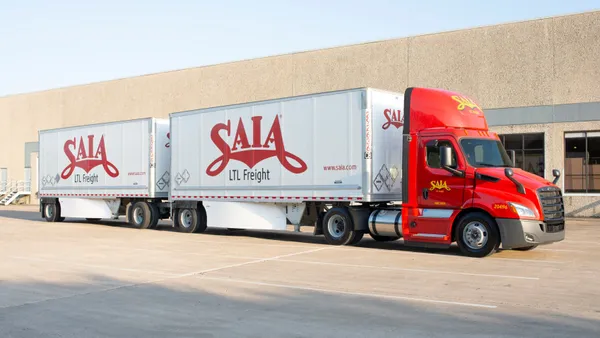Dive Brief:
- Port expansion projects costing hundreds of millions, or billions, were behind the top success stories in Descartes Datamyne's 2018 Top 20 port rankings, as shown by the ports in Mobile and Philadelphia.
- The Port of Philadelphia saw import volumes grow 21.9% in 2017, thanks to a $300 million expansion project and deepening of the Delaware River channel, according to the report.
- The Port of Mobile reached the Top 20 list for the first time this year, after completing Phase 2 of a multi-billion-dollar, five-part expansion project designed to boost throughput to 1.5 million TEUs.
Dive Insight:
The conversation around ports in the U.S. typically revolves around the big gateways in New York and California, but the Top 20 list shows smaller ports like Mobile and Philadelphia are making big investments to remain competitive.
"Ports have targets when they make their infrastructure investments," Brendan McCahill, senior vice president of trade data content at Descartes, told Supply Chain Dive in an e-mail.
While "main line" ports are chasing volumes brought by bigger ships with their spending, smaller facilities often seek to turn cargo faster, or better, through specialized services or less density.
Philadelphia, for example, is considered a "reefer port" due to its high fruit and meat import volumes from Australia and New Zealand. Its investments suggest the port is doubling down on that identity.
In addition to its deepening projects, McCahill said, its recent volumes suggest the port has also boosted its refrigerated warehouse capacity. In 2017, Datamyne data shows main-line carrier MSC, refrigerated specialists Network Shipping and Maersk's Sea Land — which focuses largely in perishable-heavy Central America — all had big upticks in their throughput at Philadelphia.
Mobile's rise to the Top 20 list may have been bolstered by the effects of Hurricane Harvey on the Gulf Coast, which left shippers looking for new import destinations during the recovery, McCahill said.
Much of the volume increase at the port is by the major carriers, after all, which already have established shipping networks. But, "certain rail improvements through Mobile by CSX that have brought more service into this corridor," likely helped make — and keep — the Alabama port an import destination of choice.
The two ports are infrastructure success stories, but not all investments — no matter how targeted — pay off.
McCahill said San Francisco could "never gain an edge" on Oakland, despite its natural depth, and Amsterdam saw its heavy investments in Ceres Terminals go to waste because "carriers could not get past the lockage that was required."
"A bit of the 'best laid plans' sometime can go awry," he said.















